- Overview
- Info & Inclusions
- Itinerary
- Map & Hotels
- Photos
- Dates & Prices
- Max Group Size 18
- Maipo-heart of Chile's wine country
- Exploring Torres del Paine National Park
- Catamaran cruise through the icy waters of the Chilean fjords
- Chilean Lakes District
- Atacama Desert and Valley of the Moon
- Vibrant Santiago
- Remote and mysterious Easter Island
- Singles friendly (view options for single travellers)
From meandering through the world-famous wine-producing regions in the Central Valley, to standing agog in front of the Torres del Paine in the national park of the same name - often considered South America's best park - and from cruising through icy Chilean fjords, to marvelling at bubbling hotsprings in the Atacama Desert, we discover a country of uncommon natural breadth.
The lunar landscapes in the Valley of the Moon prove an otherworldly experience and our cultural exploration includes taking in ancient sites on the remote and mysterious Easter Island, exploring traditional mainland villages whose buildings are made from white volcanic stone and spending time in the major urban centres, like the lively Santiago.
- MealsSavour authentic flavours with included daily breakfasts, some lunches, and dinners at hotels or handpicked local restaurants—immersing you in local cuisine without worrying about reservations or budgets.
- Transport & Logistics
Private air-conditioned coaches and included internal ferries and flights—ensuring hassle-free travel so you can focus entirely on the discoveries ahead.
"Adventures Abroad tour leader's management and guest services managed the tour with great skill and dedication. The tour leader was on top of every move and transfer. We have not experienced any issues with logistics and had a great time."
~ JULIA O"The tour leader did an excellent job coordinating some difficult travel logistics, power outage issues and resolving problems and dealing with guests who had unrealistic expectations."
~ CYNTHIA COLLINS - Expert Guidance
Unlock insider secrets at every landmark with your full-time Tour Leader and expert local guides , all gratuities covered—no hidden tipping surprises—so you immerse fully in your destination's stories, worry-free. (Except for the tips to your tour leader at the end of your tour.)
"Amazing tour guide. Our tour guide was very well organized, Her passion, knowledge, and enthusiasm completely transformed the travel experience into something truly unforgettable..."
~ MELANIE LEMAIRE"Highly recommend every trip with Adventures Abroad. It's a well organized and well thought out adventure. The tour leaders are friendly, knowledgeable and experienced professionals. Highly recommend this company."
~ SUSAN WALL - Sightseeing & EntrancesAll entrance fees for sites visited as per the itinerary—no hidden costs—so you can explore ancient ruins and excursions with complete peace of mind.
- AccommodationsUnwind in clean, well-located 3 to 4-star hotels with private en suite facilities—handpicked for comfort and convenience after each day's discoveries—so you can rest easy knowing your stay supports the real adventure, not steals the spotlight.
- Small Group
Discover the world in small groups of up to 18 travellers plus your expert Tour Leader—unlocking spontaneity, off-the-beaten-path adventures, and genuine connections at a relaxed pace, free from crowds.
"Looking Forward to My Next Adventure The best feature of the Adventures tour was the small size that allowed the group to quickly load up, let everyone get acquainted within the first 24 hours, capitalize on unplanned surprises along..."
~ PHILIP BLENSKI"Good value for a great time I have traveled with Adventures Abroad for over 20 years now. Well thought out, interesting itineraries and the other travelers congenial and friendly. The price always seems fair and overall a..."
~ Trusted Customer - Airport Transfers For Land & Air CustomersWe handle hassle-free airport transfers for all our land and air tour customers—plus early arrivals or late departures when you book extra hotel nights directly with us for added peace of mind.
- International airfare to/from the tour. Tour Leader gratuities, lunches, drinks, personal items (phone, laundry, etc), international (if applicable) and domestic air taxes, visa / arrival / departure fees, excursions referenced as 'optional'. Airport transfers for Land Only customers. Our post-reservation trip notes offer further guidance on optional meal costs, shopping, and visas.
- Seasonality and Weather:
Weather conditions can vary greatly from place to place. Much of our time is spent in the south where conditions can be very changeable at any time of year. We visit in the Austral summer (Nov-Mar), when Santiago and Easter Island are hot and Patagonia is at its warmest. That said you must also be prepared for cold, windy, possibly rainy conditions. - Transport and Travel Conditions:
Ground transport by private air-conditioned motor coach, 24-36 seats depending on ultimate group size (see 'group size'). Though we will have some full bus days, road travel is not particularly arduous as roads are generally in good condition, though a little winding on some stretches. Internal flights via domestic carriers.
Our difficulty "Level 1" rating for this trip refers to the comfort of our transport and accommodation and the lack of physicality in terms of walking. That said, this is a busy program with lots of moving around and full days of travel and sightseeing. You must also be prepared for the possibility of some early starts, walks at various points of interest and some short walks to dinner. Our sightseeing in towns and cities, as well as national parks, are also conducted on foot at a leisurely pace. Though we try to minimize long road journeys by utilizing internal air connections, we still have some full days of travel. Related to air travel, you must be prepared to manage your own luggage at airports. This tour does not travel to any region considered "high altitude."
Am I suitable for this tour? Please refer to our self-assessment form - Activity Level: 1
No particular physical activity is involved other than town/city walks and short walks to dinners and sites of interest, some of which are large.
To learn more about the Activity levels, please visit our tour styles page. - Accommodation:
Well-located, air- conditioned / heated, mid-range hotels and inns (3-star) used throughout. All hotels have en suite toilet and bath, though some may have shower only. Porter service is usually available (see 'inclusions') though you should be independent with your luggage, especially at airports. Single rooms are limited and likely smaller than twins. - Staff and Support:
Tour Leader and local step-on guides, driver. Catamaran crew and naturalist guides. - Group Size:
Maximum 18 plus Tour Leader
- Day 1:Arrive in Santiago, ChileWelcome to Santiago de Chile, where the towering Andes create a dramatic backdrop to South America's most sophisticated capital. Founded in 1541 by Spanish conquistador Pedro de Valdivia, this vibrant metropolis of seven million souls pulses with energy at the foot of snow-capped peaks. Transfer to your hotel and prepare to discover a country that stretches like a ribbon along the Pacific, where ancient cultures, colonial heritage, and modern innovation converge.
This evening, we gather with fellow travellers for our first dinner together, sharing anticipation for the extraordinary journey ahead through Chile's most diverse and spectacular landscapes.
NOTE: This itinerary is based on air schedules that can change without notice. Though this programme should provide a very good sense of how this tour will be accomplished, some adjustments may be required up to the time of departure.
Overnight in Santiago
Included Meal(s): Dinner, if required - Day 2:Santiago: Vina del Mar & ValparaisoThis morning we journey to central Chile's Pacific coast, where the colonial jewel of Valparaíso clings to precipitous hillsides like a painter's palette splashed against the sea. Our route winds through the coastal plain past Casablanca Valley, Chile's fastest-growing wine region, where vineyards carpet rolling hills beneath endless sky.
Valparaíso—'Paradise Valley'—once reigned as South America's most vital Pacific port, linking Atlantic and Pacific through the treacherous Strait of Magellan. Built upon dozens of steep hillsides overlooking infinite ocean, this UNESCO World Heritage Site embodies a labyrinth of cobblestone streets and architectural treasures constructed between 1880 and 1940. We discover the heart of the historic quarter, riding the legendary funiculars that climb like mechanical angels—31 stations once perched across the city's dramatic terrain.
We ascend aboard Ascensor Artillería, built in 1898, offering spectacular coastal panoramas, then experience the Cordillera funicular from 1887, the steepest and second-oldest 'elevator' still carrying passengers skyward.
Along the coast, we explore Viña del Mar, the celebrated 'Garden City,' before returning to Santiago through landscapes that transition from Pacific shores to Andean foothills.
Overnight in Santiago
Included Meal(s): Breakfast and Dinner - Day 3:Santiago & the Maipo ValleyWe venture south into the enchanting Maipo Valley, often called the 'Bordeaux of South America,' where terroir and tradition create liquid poetry. This scenic region unfolds like a living tapestry—rolling hills adorned with geometric vineyards, the majestic Andes rising in the distance, and the life-giving Maipo River threading through valleys that have nurtured vines for centuries.
During our exploration, we visit a distinguished winery for an intimate tour and tasting, discovering how climate, soil, and passion combine to create wines that rival the world's finest. The landscape reveals itself as a harmonious blend of cultivated fields, fruit orchards, and native forests, creating an environment where natural beauty and human craftsmanship dance together.
We then proceed to Santiago's Plaza de Armas, the beating heart of the city since 1541. As the midpoint of the original Spanish settlement, this square began as a military training ground—hence its martial name—but evolved into the epicentre of Santiago's social and commercial life, surrounded by some of the nation's most accomplished architecture.
Overnight in Santiago
Included Meal(s): Breakfast and Dinner - Day 4:Santiago - Fly to Puerto Natales - Torres del PaineThis morning we transfer to the airport for our flight to Puerto Natales, gateway to one of Earth's last frontiers. From this charming port town alongside Ultima Esperanza Sound, we journey to the legendary Mylodon Cave, where in 1895 settler Eberhard Hermann discovered the preserved fur of a massive extinct sloth, revealing secrets of Patagonia's prehistoric past.
We then continue to the southern tip of the Andes and Torres del Paine National Park, arguably South America's most spectacular wilderness sanctuary. Here, granite towers soar 2,000 metres (6,560 feet) above the Patagonian landscape like ancient cathedrals piercing endless sky. This 180,000-hectare (450,000-acre) UNESCO World Heritage site encompasses ancient forests, sprawling glaciers, turquoise lakes, roaring rivers, and pristine fjords.
Wildlife thrives in this untamed realm—guanacos graze across windswept steppes, while foxes, pumas, and countless bird species call these lands home. The park represents nature's grandest amphitheatre, where every vista reveals waterfalls cascading from impossible heights and glaciers that have carved valleys for millennia.
Overnight in Torres del Paine National Park
Included Meal(s): Breakfast and Dinner - Day 5:Torres del Paine National Park: Full Day of ExplorationToday we immerse ourselves completely in Torres del Paine's breathtaking wilderness, travelling by coach throughout all accessible regions while stopping at viewpoints that redefine spectacular. When weather permits, panoramic vistas unfold endlessly—each turn revealing new masterpieces painted by wind, water, and time.
We walk along gentle trails offering expansive views of mountains, waterfalls, and glaciers that define Patagonian legend. At Grey Glacier, we approach the ancient ice face where centuries of snowfall have compressed into a river of blue-white ice. A short walk brings us to Salto Grande, where the Paine River explodes through granite channels in thunderous celebration.
During our exploration, we witness the Cascada del Río Paine and the ethereal beauty of Lago Pehoe, its turquoise waters reflecting the granite spires like a mirror crafted by gods.
Some believe 'Paine' honours an early settler, while others trace it to an ancient indigenous word meaning 'blue'—perhaps referencing the intense azure of these pristine lakes. Founded in 1959, this remarkable wilderness earned UNESCO recognition in 1978 as a biosphere of international significance.
The glaciers retreat up to 17 metres (56 feet) annually, creating a fascinating study of plant succession as life reclaims bare rock, transforming it gradually into flourishing forest.
Overnight in Torres del Paine National Park
Included Meal(s): Breakfast and Dinner - Day 6:Torres del Paine National Park - Punta ArenasThis morning we bid farewell to Torres del Paine's granite spires and travel across Patagonian steppes to Punta Arenas, where the continental mainland surrenders to the labyrinth of channels and islands that fragment toward Antarctica.
Upon arrival, we visit the Municipal Cemetery, a haunting testament to human dreams and determination in this remote corner of the world. Beneath immaculately trimmed cypress trees and along tree-lined pathways, we discover the final resting places of pioneers, immigrants, and families from diverse nations who left indelible marks on the colonisation and development of this isolated region.
The weathered headstones tell stories of Europeans, Chileans, and adventurers who ventured to the ends of the Earth seeking fortune, freedom, or simply the chance to build new lives beneath the Southern Cross. Each gravestone represents a human story of courage, loss, triumph, and the eternal human desire to explore beyond known horizons.
Overnight in Punta Arenas
Included Meal(s): Breakfast and Dinner - Day 7:Punta Arenas - Fly to Puerto Montt - Puerto VarasThis morning we fly northward to Puerto Montt, trading Patagonian steppes for the verdant landscapes of Chile's enchanting Lake District. We then drive the short distance to Puerto Varas, perfectly positioned at the northern shore of Golfo de Reloncaví, where Germanic influence mingles with Chilean tradition in a setting of spectacular lakes and snow-crowned volcanoes.
Puerto Varas stands as one of southern Chile's most important cities, its streets lined with distinctive wooden architecture that echoes the craftsmanship of German settlers who arrived in the mid-19th century. The surrounding region unfolds as a tapestry of crystal-clear lakes reflecting volcanic peaks, ancient forests harboring centuries-old trees, and emerald pastures where cattle graze beneath the watchful gaze of smoking volcanoes.
This is a landscape sculpted by fire and ice—where volcanic activity and glacial forces have conspired to create one of South America's most photogenic regions, earning it the nickname 'Switzerland of South America' for its alpine beauty and pristine wilderness.
Overnight in Puerto Varas
Included Meal(s): Breakfast and Dinner - Day 8:Puerto Varas Area: Osorno Volcano / Lago Todos los SantosToday's adventure takes us along the shores of Lake Llanquihue to witness the extraordinary Petrohué waterfall, where the Rio Petrohué carves through crystallised black volcanic rock in a series of twisting jade-coloured chutes. The water glows emerald due to natural algae, creating an otherworldly spectacle against the backdrop of Osorno Volcano's perfect snow-capped cone.
From the village of Petrohué, we board a catamaran for a serene crossing of Lago Todos los Santos—the 'Lake of All Saints'—whose azure waters mirror surrounding peaks in perfect symmetry. Our destination is Puella, a tiny village serving travellers bound for Argentina, where we pause for a break for lunch and discover the nearby Cascada de Los Novios waterfall, a brief walk through native forest.
The lake journey reveals the profound silence of pristine wilderness, broken only by the gentle wake of our vessel and the distant call of waterfowl. Surrounding peaks rise directly from the water's edge, their slopes clothed in temperate rainforest that has remained virtually unchanged since the last ice age.
We return across the lake as afternoon light transforms the volcanic landscape into a canvas of gold and shadow.
Overnight in Puerto Varas
Included Meal(s): Breakfast and Dinner - Day 9:Puerto Varas - Fly to Balmaceda - Puerto ChacabucoEarly this afternoon, we fly north to Balmaceda, a small village nestled against the western Andes, then drive to Puerto Chacabuco through some of Chile's most remote and spectacular wilderness. Our route follows part of the legendary Austral Road, which threads through Llanquihue and Palena provinces into the pristine Aysén region, passing the beautiful city of Coyhaique.
This journey offers a magnificent introduction to the astonishing variety of landscapes found at this southern latitude, where temperate rainforests transition to Patagonian steppes, and glacial valleys carve through granite peaks that have stood sentinel for millions of years.
The Austral Road itself represents one of Chile's greatest engineering achievements—a ribbon of asphalt that connects isolated communities across some of the planet's most challenging terrain. Along our route, we witness the gradual transition from volcanic Lake District scenery to the raw, windswept beauty of northern Patagonia, where condors soar on thermals and pristine rivers cascade from hanging glaciers.
Overnight in Puerto Chacabuco
Included Meal(s): Breakfast and Dinner - Day 10:Laguna San Rafael & San Rafael Glacier DiscoveryToday unfolds as one of Earth's most spectacular wilderness experiences as we board a large catamaran for an unforgettable journey through islands, channels, and fjords toward the legendary Laguna San Rafael. Our destination lies at the foot of the Northern Patagonian Ice Field, where San Rafael Glacier flows directly into a pristine lagoon surrounded by peaks draped in perpetual ice.
Navigation through these protected waters reveals a maze of channels carved by ancient glacial forces, where waterfalls plunge from impossible heights and untouched forests reflect in mirror-still lagoons. Seabirds wheel overhead while seals bask on isolated rocks, creating a symphony of wilderness sounds.
When we near the glacier's face, we board zodiacs for intimate contact with this frozen river of time. Here, surrounded by ice formations sculpted over millennia, we witness nature's most powerful artistry—walls of blue ice calving into turquoise waters with thunderous roars that echo across the lagoon.
As our extraordinary day concludes, we toast with 'whisky on the rocks' made from ice cubes over 20,000 years old—a moment that captures the timeless magic of Patagonia's pristine wilderness.
Overnight in Puerto Chacabuco
Included Meal(s): Breakfast, Lunch and Dinner - Day 11:Aiken del Sur Private Park Nature WalkThis morning we journey to Aiken del Sur Private Park, a pristine sanctuary on the shores of Lago Riesco where 14 square kilometres (5.4 square miles) of crystal-clear water reflect surrounding peaks in perfect tranquillity. Here, a 22-metre (72-foot) waterfall cascades through native woodlands where perennial species, annual plants, moss, and liverworts create a living museum of Patagonian flora.
The landscape reveals widespread prairies where ancient myrtles and tepa trees intermingle with taro and mallin plants across diverse wetlands. Our exploration begins at the intimate Visitors' Centre, featuring interactive exhibitions about local flora, fauna, and the anthropological history of northern Patagonia's indigenous peoples.
We then embark on an easy 1.5-hour walk along scenic trails complete with catwalks, bridges, and observatory points that reveal the bio-geographical story of each ecosystem. Information stations explain how geological forces and climate have shaped this remarkable environment, while the wonderful scenery of lake, river, and Andean peaks creates an amphitheatre of natural beauty.
The melodic calls of endemic birds like the Chucao and Huet-huet provide nature's soundtrack to our gentle exploration.
At our walk's conclusion, we savour a traditional Patagonian lamb barbecue (vegetarian options available), followed by time to relax or explore additional footpaths.
Overnight in Puerto Chacabuco
Included Meal(s): Breakfast, Lunch and Dinner - Day 12:Balmaceda - Fly to Calama - San Pedro de AtacamaToday we journey north to an entirely different world as we fly to Calama via Santiago, entering the ethereal realm of the Atacama Desert—Earth's most arid landscape. Upon arrival, we transfer to San Pedro de Atacama at 2,300 metres (7,546 feet) elevation, where we transition from Patagonian ice to desert moonscapes.
Northern Chile harbours the planet's driest desert alongside salt flats, hot springs, geysers, and vast mineral deposits including copper that has shaped the region's economy for generations. This remarkable altiplano also nurtures fertile oases inhabited by Chile's indigenous peoples, where both Incan and Spanish influences create a unique cultural tapestry.
Archaeological evidence reveals human existence here spanning over 10,000 years, with civilisations adapting to one of Earth's most challenging environments. No significant precipitation has been recorded since the Spanish colonial period, creating landscapes so otherworldly that NASA uses this region to test Mars exploration equipment.
The transition from Patagonia's ice-carved wilderness to Atacama's ancient desert represents one of our planet's most dramatic geographical contrasts, where we exchange emerald forests and glacier-fed lakes for landscapes painted in ochre, copper, and gold beneath crystalline skies.
Overnight in San Pedro de Atacama
Included Meal(s): Breakfast and Dinner - Day 13:Atacama Area: Salar de Atacama / Lago Chaxa / Toconao / Tulor & QuitorWe begin today's exploration at the magnificent Salar de Atacama, our planet's largest salt lake, where waters flowing from Andean peaks become trapped in this endorheic basin, creating ethereal landscapes of crystallised minerals. Rich in borax and lithium, these salt flats provide crucial habitat for flamingos and diverse bird species that have adapted to this harsh alkaline environment.
At Lago Chaxa within the Reserva Nacional de los Flamingos, we often approach flamingos in their natural habitat, observing how these elegant birds filter microscopic organisms from mineral-rich waters. The sight of pink flamingos against white salt formations and azure lagoons creates surreal beauty that challenges earthly expectations.
We then visit colonial Toconao, where volcanic rock serves as both building material and artistic medium. The church (1744) and San Lucas bell tower (1750) showcase local craftsmanship using white volcanic stone, while narrow streets invite quiet exploration of this timeless village.
After lunch in San Pedro, we visit Tulor, a 2,800-year-old archaeological site revealing the region's earliest habitation evidence. This ancient oasis, once sustained by the San Pedro River, represents one of Atacama's most significant archaeological discoveries.
Our exploration concludes at Pukara de Quitor, where Atacameño people constructed this fortress to defend against Spanish conquistador Pedro de Valdivia. This pre-Columbian site overlooks the San Pedro River valley, designated a national monument in 1982.
Overnight in San Pedro de Atacama
Included Meal(s): Breakfast and Dinner - Day 14:Atacama Area: El Tatio Geysers / Valley of the MoonBefore sunrise, we ascend northeast into the Andes toward El Tatio geysers at 4,400 metres (14,436 feet), arriving as dawn illuminates over 100 geysers, boiling pools, and fumaroles in the southern hemisphere's largest geyser field. Here, superheated water emerges violently as steam in the frozen ground, creating an otherworldly spectacle against snow-capped peaks.
This ethereal landscape supports unique wildlife adapted to extreme altitude. If fortunate, we photograph vicuñas—wild relatives of llamas—grazing across high-altitude plains, while the tiny village of Machuca reveals how humans have adapted to life at the roof of the world. Small lagoons shelter indigenous bird species including Andean Geese and Giant Coots.
Returning to San Pedro for lunch, we then venture to the legendary Valley of the Moon as afternoon light begins its magical transformation. This lunar landscape within the Salt Mountain Range reveals geological formations sculpted by millions of years of erosion—canyons, caves, and depressions that create alien terrain beneath Earth's sky.
From atop sand dunes, unique panoramas unfold across salt mountains toward distant volcanic peaks. We position ourselves on the valley's upper ridge to witness sunset in this bizarre landscape formed by salt mountain erosion, where light reflecting off salt crystals creates an eerily beautiful spectacle that inspired the valley's celestial name.
Overnight in San Pedro de Atacama
Included Meal(s): Breakfast and Dinner - Day 15:Atacama - Fly to SantiagoToday we drive to Calama for our flight returning to Santiago, trading desert moonscapes for metropolitan sophistication. Depending on flight schedules, free time may await either in San Pedro's adobe streets lined with artisan shops and desert-adapted gardens, or in Santiago's cosmopolitan neighbourhoods where Andean peaks frame urban energy.
The transition from Atacama's otherworldly silence to Santiago's vibrant pulse represents Chile's remarkable diversity—a nation where Earth's driest desert and snow-capped volcanoes, ancient indigenous cultures and modern cities, exist within a single extraordinary country that stretches like a geographic miracle along South America's Pacific edge.
Santiago welcomes us back with tree-lined avenues, sophisticated cuisine, and the familiar backdrop of the Andes rising above urban sprawl—a metropolis that serves as the perfect bridge between our desert adventures and the Pacific island paradise that awaits.
Overnight in Santiago
Included Meal(s): Breakfast and Dinner - Day 16:Santiago - Fly to Easter IslandToday we embark on one of the world's most remote journeys, flying 3,700 kilometres (2,300 miles) west across the Pacific to Easter Island—Rapa Nui—one of Earth's most isolated inhabited places. Upon arrival at Mataveri Airport, we encounter our first moai, those enigmatic stone guardians that have watched over this volcanic triangle for centuries.
Hanga Roa, the island's only town, houses most of the 5,500 residents in a setting that captures authentic South Pacific atmosphere. Here, Polynesian culture thrives in splendid isolation, where the pace of life moves to ancient rhythms beneath endless skies.
Easter Island lies over 3,200 kilometres (1,988 miles) from the nearest population centre, making it among our planet's most isolated inhabited places. This triangular volcanic island in the vast Pacific hosts almost 900 giant stone figures dating back many centuries, revealing their creators as master craftsmen and engineers whose achievements continue to mystify archaeologists and visitors alike.
The early Polynesian settlers called their home 'Te Pito O Te Henua'—'Navel of The World.' Dutch Admiral Roggeveen, arriving on Easter Day 1722, bestowed the European name. Today, the land, people, and language are known as Rapa Nui, maintaining cultural connections to distant Polynesian cousins across the Pacific's vast expanse.
Overnight on Easter Island
Included Meal(s): Breakfast and Dinner - Day 17:Easter Island: Full Day of Exploration / Rano Kau & Orongo VillageOur exploration begins at Ahu Akivi, restored in the 1960s, featuring seven standing moai—the island's only ceremonial platform where moai gaze toward the ocean rather than inland. We then visit Puna Pau, a small extinct volcano whose name means 'dry spring,' where soft red volcanic rock was quarried to create pukaos—the distinctive red 'headdresses' adorning some moai.
At Ahu Vinapu, we witness incredible stone walls reminiscent of ancient Incan architecture, their precision sometimes used to support theories of South American contact with early islanders. These massive basalt blocks fit together with breathtaking precision, demonstrating sophisticated engineering skills.
After lunch in Hanga Roa's heart, we journey to Rano Kau, the island's southernmost volcano, where an opportunity unfolds to survey most of the island alongside its reed-covered crater lake. From the western slopes, impressive views reveal the rocky islets Motu Nui, Motu Iti, and Motu Kao-Kao floating in Pacific immensity.
Rano Kau's main feature is the rebuilt ceremonial village of Orongo, site of the extraordinary Tangata Manu (birdman) ceremony that annually determined the island's spiritual leader. This sacred site overflows with petroglyphs representing Tangata Manu and the god Make-Make, offering insights into the complex spiritual world that governed Rapa Nui society for centuries.
Overnight on Easter Island
Included Meal(s): Breakfast and Dinner - Day 18:Easter Island: Full Day of Exploration / Rano RarakuToday's highlight awaits at spectacular Rano Raraku quarry, Easter Island's most iconic location and the original 'factory' where moai were born from volcanic rock. Here, dozens of gigantic statues cover the inner and outer slopes of this extinct volcano, creating the world's most extraordinary outdoor sculpture gallery.
Among so many statues in situ, we admire them in different production stages—from initial carving in bedrock to upright positions and others lying face-down along their intended roads to ceremonial platforms. This remarkable site reveals the incredible ambition and skill of Rapa Nui's ancient sculptors.
We then proceed to Ahu Tongariki, Easter Island's largest moai site, where 15 moai stand in magnificent formation, including the island's largest erected statue. These giants were toppled during 17th-century tribal warfare, remaining fallen until the devastating 1960 earthquake and tsunami scattered them hundreds of metres inland. Restoration has returned them to their vigilant stance.
Along the south coast, we stop at Ahu Akahanga, featuring four large fallen statues where legend places the tomb of the island's first king. At Vaihu, another ancient site displays ruins that speak of the island's turbulent history.
This afternoon, we cross the island's heart to Papa Vaka on the north coast, an archaeological site characterised by numerous petroglyphs with maritime and fishing motifs that reveal the ocean's central importance to Rapa Nui culture.
Our day concludes at beautiful Anakena beach, where standing moai overlook a white sandy shore lined with coconut palms.
Overnight on Easter Island
Included Meal(s): Breakfast and Dinner - Day 19:Easter Island: Day at LeisureToday unfolds at your own pace on this remote Pacific paradise. Perhaps return to Anakena's pristine beach for contemplation beneath swaying palms, embark on a gentle hike across volcanic terrain, or wander Hanga Roa's quiet streets discovering local shops, intimate cafes, and artisan markets where Rapa Nui culture lives in contemporary expressions.
The island's compact size—just 24 kilometres (15 miles) at its longest point—invites unhurried exploration. Consider revisiting favourite moai sites as light changes throughout the day, each moment revealing new perspectives on these ancient mysteries. The archaeological museum offers deeper insights into Polynesian navigation, island ecology, and the remarkable story of human survival in Earth's most isolated inhabited place.
Alternatively, simply absorb the profound peace that comes from standing at the world's edge, where endless Pacific horizon meets volcanic peaks beneath skies unmarred by light pollution. This is time for personal reflection in a place where ancient mysteries and natural beauty converge in perfect harmony.
Overnight on Easter Island
Included Meal(s): Breakfast and Dinner - Day 20:Easter Island - Fly to SantiagoToday we travel back across the Pacific to Santiago, carrying memories of moai guardians and pristine landscapes that exist nowhere else on Earth. Depending on flight times, you may enjoy final moments on Easter Island or arrive in Santiago with afternoon hours to explore Chile's sophisticated capital.
If we arrive late in Santiago, we will likely overnight at an airport hotel for convenience.
The journey from Rapa Nui's isolation back to continental Chile represents a transition from timeless mystery to contemporary energy, yet both experiences reveal different facets of Chile's remarkable character—a nation that encompasses Pacific islands, Atacama moonscapes, Patagonian wilderness, and cosmopolitan cities within its extraordinary geography.
Overnight in Santiago.
Included Meal(s): Breakfast and Dinner - Day 21:DepartureDeparture from Santiago.
¡Buen Viaje! / Bon Voyage!
Included Meal(s): Breakfast
Countries Visited: Chile
*The red tour trail on the map does not represent the actual travel path.

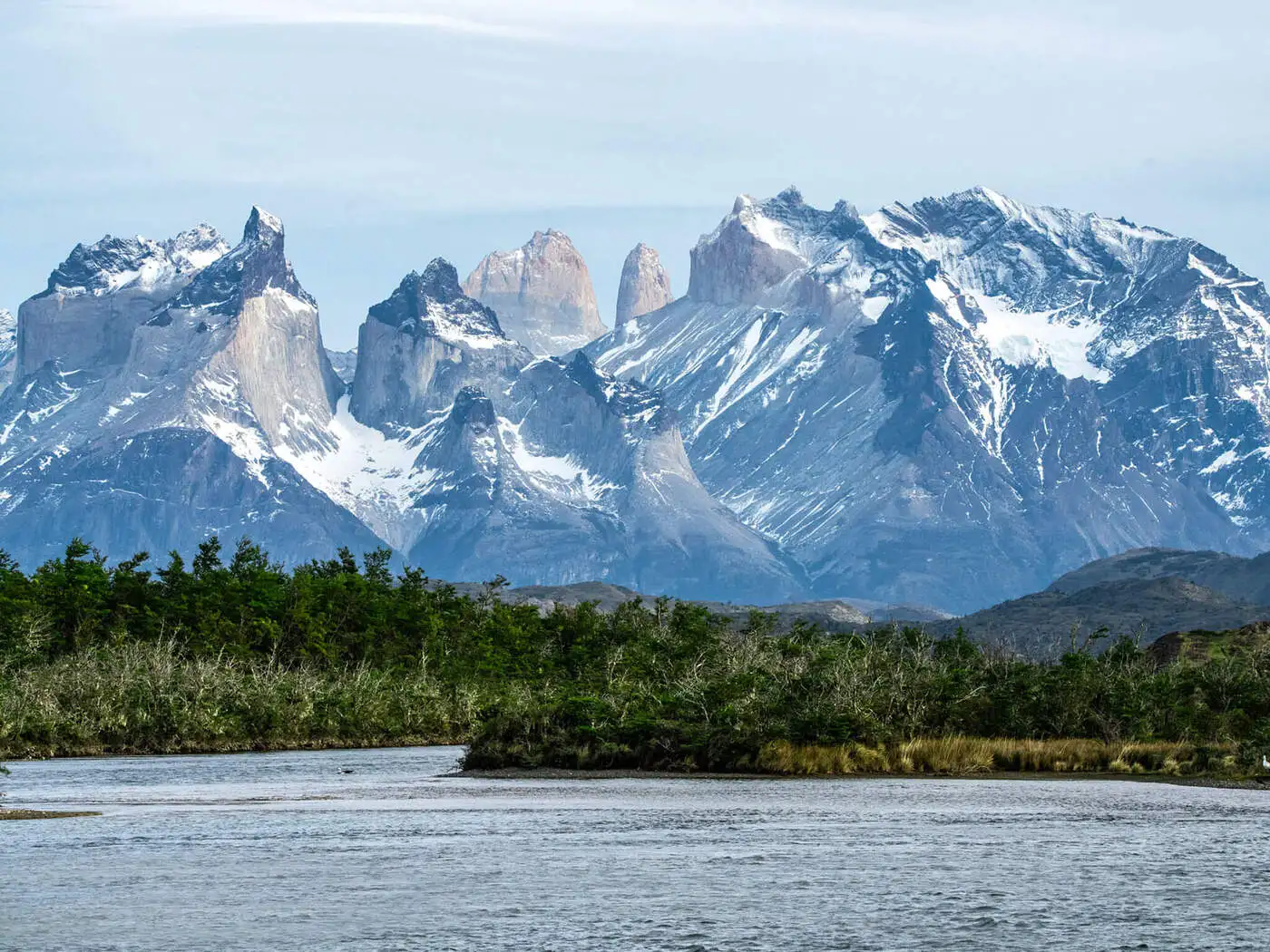
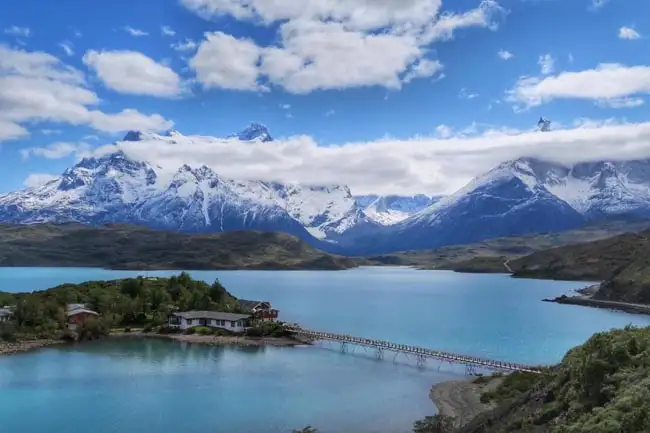
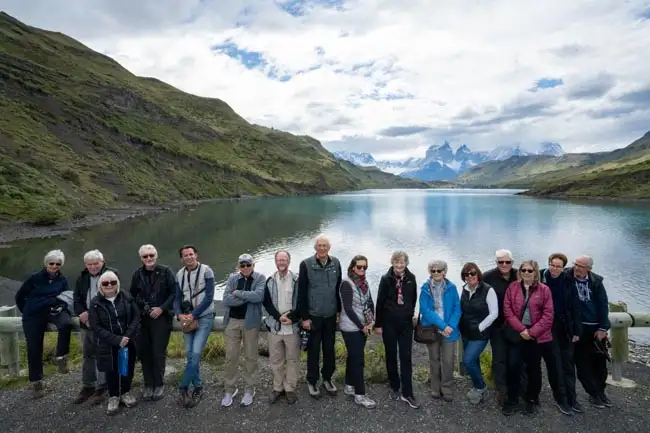
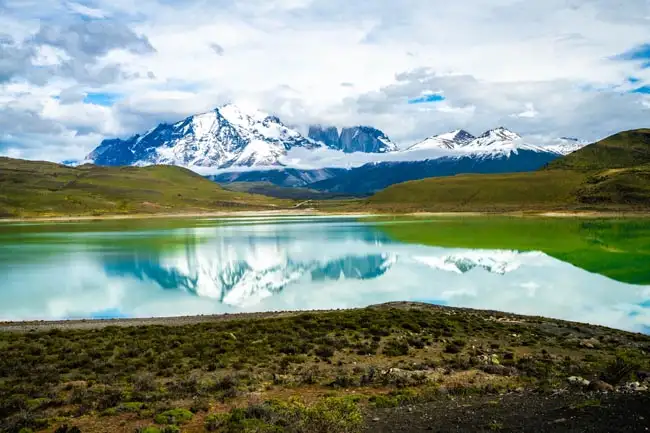
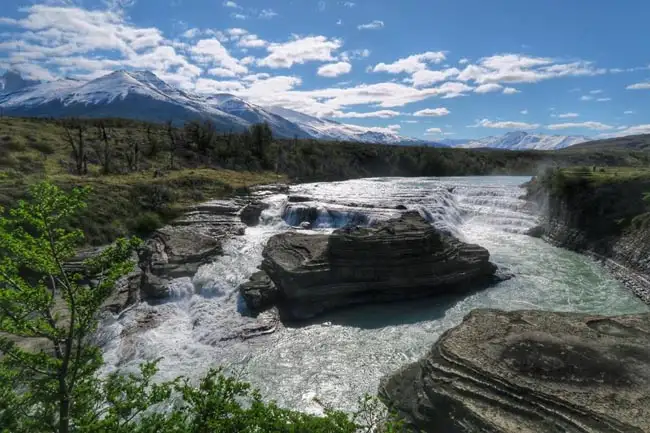
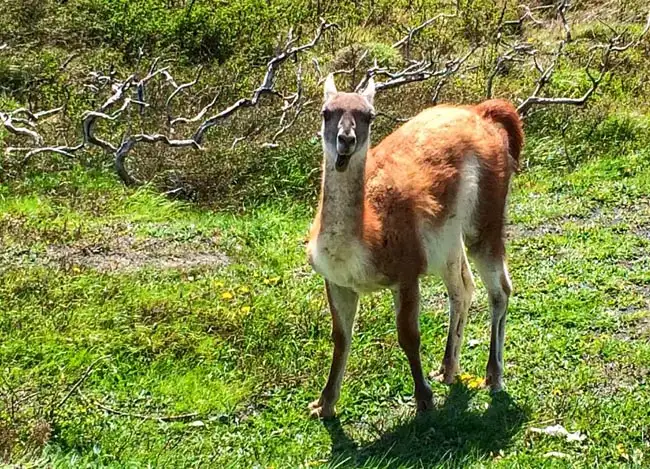
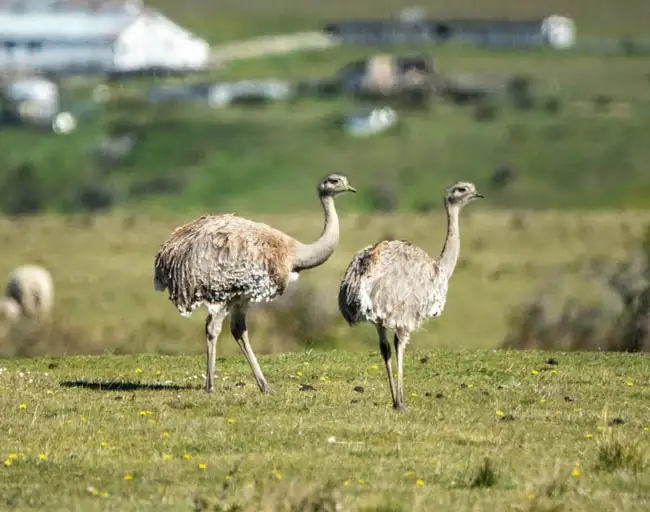

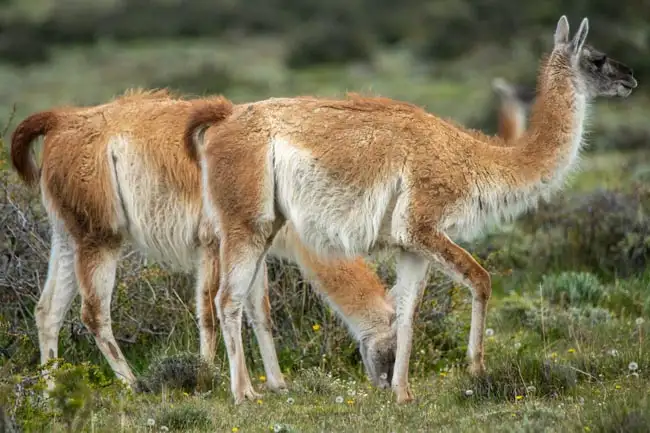

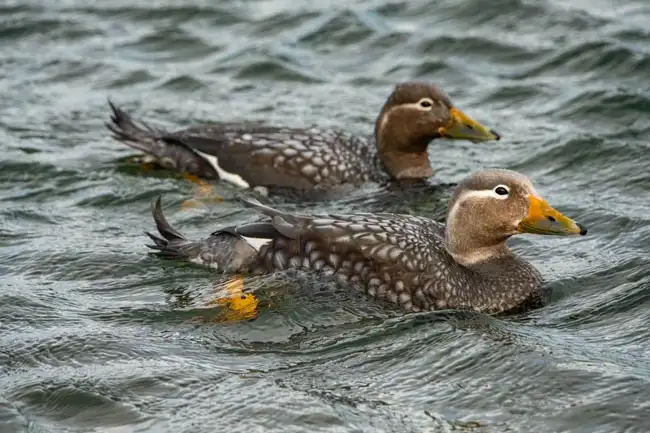
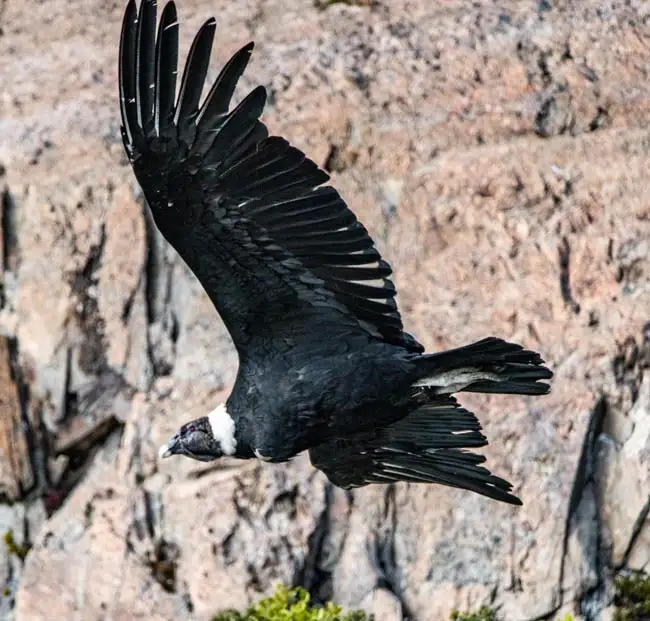

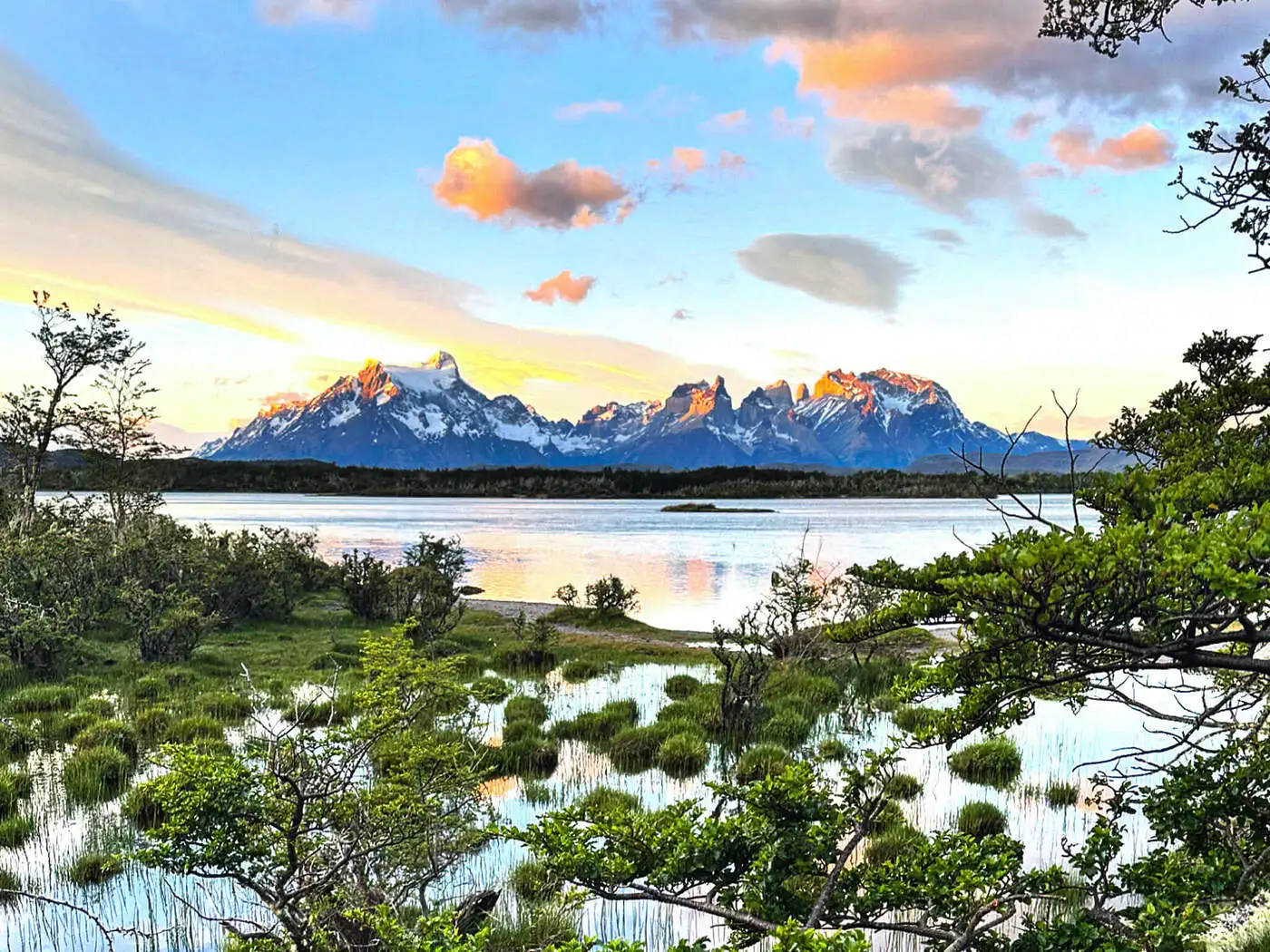
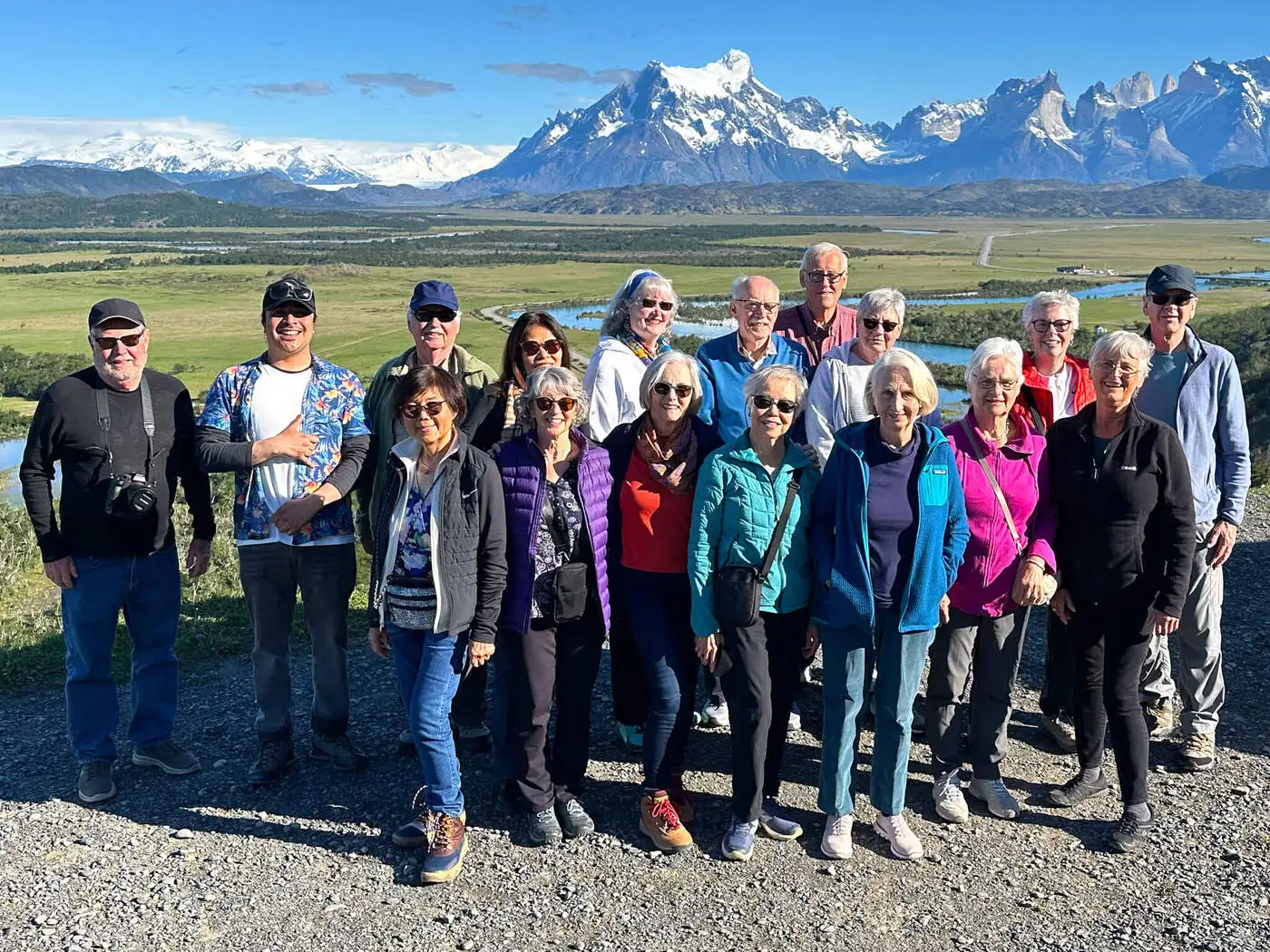
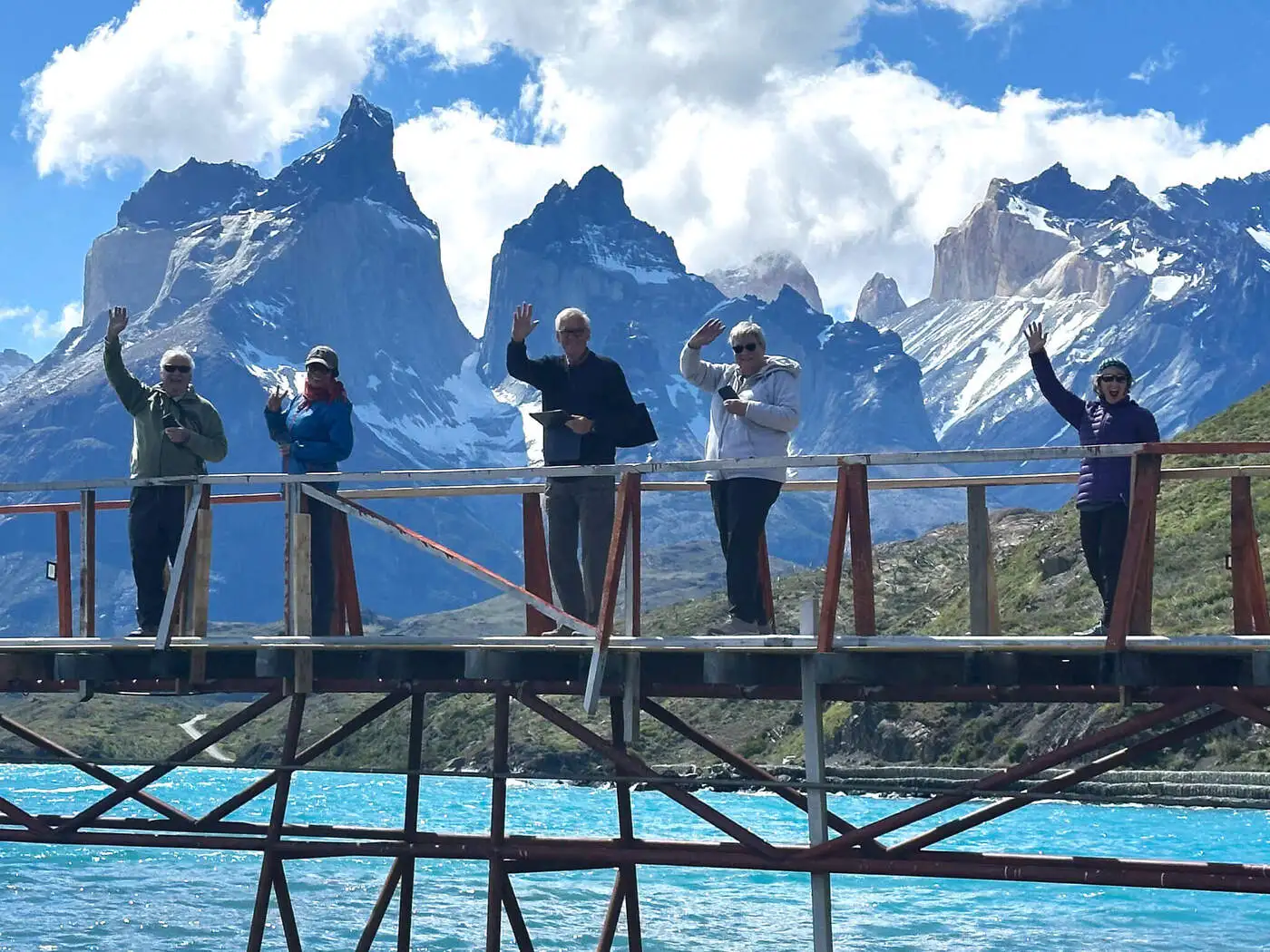















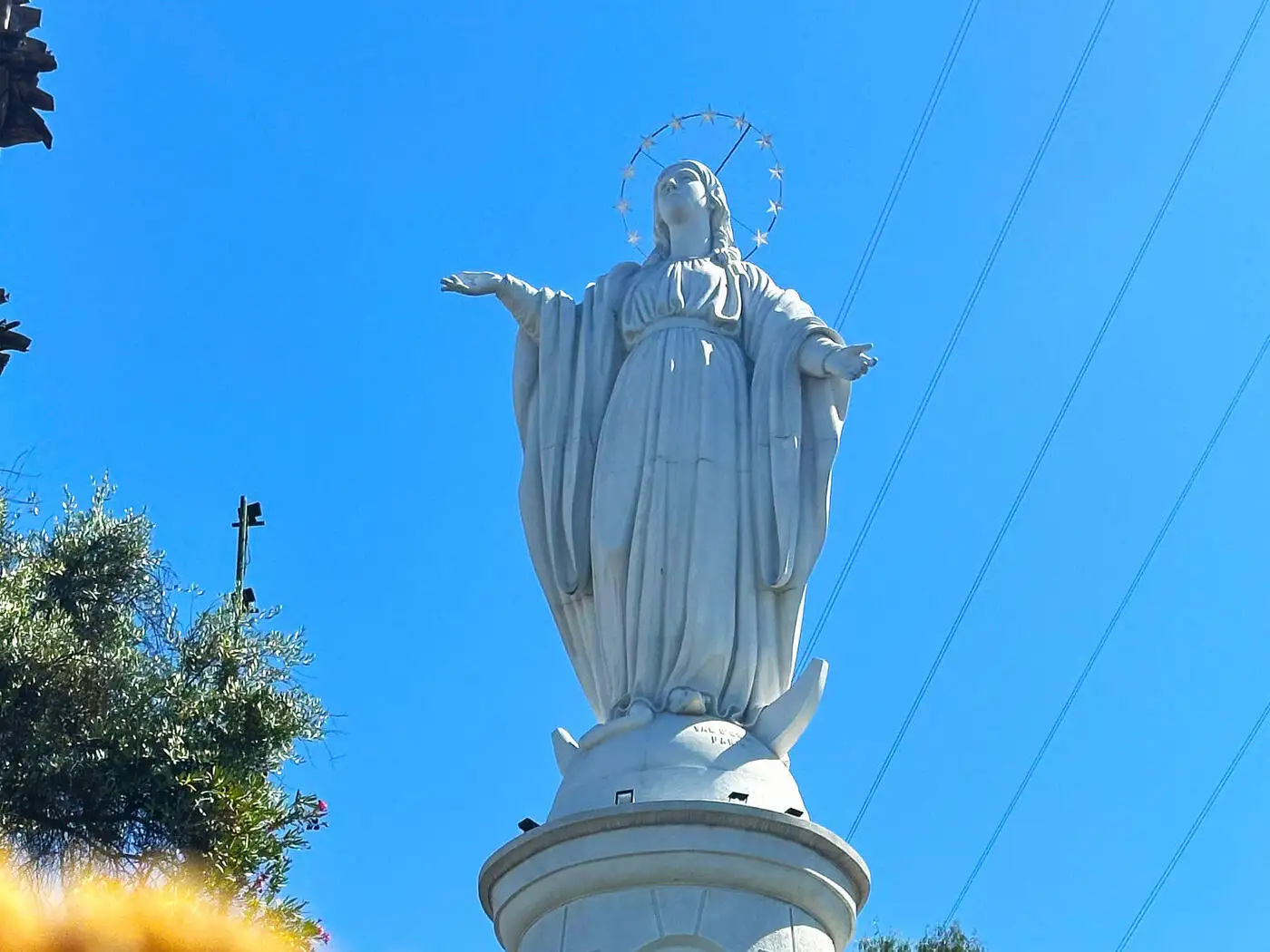

Book This Tour
- Final payment: Due 90 days prior to departure.
- Deposit: A non-refundable $1000 USD Deposit is required at booking.
- Internal Flight Taxes: An extra $211 USD applies for taxes and fees on tour flights. The internal airfares are included, but taxes are listed separately as they may change. Exceptions are noted in Red.
- Optional Single Supplement: $2310 USD (number of singles limited).
(View options forsingle travellers) - $1000 per person deposit required due to nature of internal flights; additional $2000 pre-payment upon 'guarantee" upon which your initial deposit and addition become 100% non-refundable/non-transferrable.
Prices below are per person, twin-sharing costs in US Dollars (USD). Pricing does not include airfare to/from the tour and any applicable taxes.
Frequently Asked Questions
- What is the maximum number of participants on a trip?Most of our tours carry a maximum of 18 participants; some tours (ie hiking tours) top out at 16. In the event that we do not achieve our minimum complement by our 90-day deadline, we may offer group members the option of paying a "small-group surcharge" as an alternative to cancellation. If all group members agree, we will confirm the trip at existing numbers; this surcharge is refundable in the event that we ultimately achieve our regular minimum. If the small group surcharge is not accepted, we will offer a refund of your deposit or a different trip of your choice.
- Can I extend my tour either at the beginning or end? What about stopovers?Yes, you can extend your tour either at the beginning or the end and we can book accommodation in our tour hotel. Stopovers are often permitted, depending on air routing. Stopovers usually carry a "stopover" fee levied by the airline.
- How do I make a reservation? How and when do I pay?The easiest way to make a reservation is via our website; during office hours, you are also more than welcome to contact us by telephone.
A non-refundable deposit is payable at the time of booking; if a reservation is made within 90 days, full payment is required. Some trips require a larger deposit. If international airline bookings require a non-refundable payment in order to secure space or the lowest available fare, we will require an increase in deposit equal to the cost of the ticket(s).
Early enrolment is always encouraged as group size is limited and some trips require greater preparation time.
Once we have received your deposit, we will confirm your space and send you a confirmation package containing your trip itinerary, any visa/travel permit related documents, invoice, clothing and equipment recommendations, general information on your destination(s), and forms for you to complete, sign and return to us. Your air e-tickets (if applicable), final hotel list, final trip itinerary, and instructions on how to join your tour, will be sent approximately 2-3 weeks prior to departure. - What about cancellations, refunds, and transfers?Please review our cancellation policy page for details.
- I am a single who prefers my own room. What is a single supplement?All of our tours have a single supplement for those who want to be guaranteed their own room at each location.
This supplement is a reflection of the fact that most hotels around the world do not discount the regular twin-share rate for a room by 50% for only one person occupying a room. Most hotels will give a break on the price, but usually in the range of 25-30% of the twin-share rate. This difference, multiplied by each night, amounts to the single supplement.
The conventional amount can also vary from country to country and some destinations are more expensive than others for single occupancy. In order to be "single friendly," the supplements we apply are not a profit centre for us and we do our best to keep them as reasonable as possible.
On most tours we limit the number of singles available, not to be punitive, but rather because many hotels allow for only a limited number of singles; some smaller hotels at remote locations also have a limited number of single rooms available.
Please note that most single rooms around the world are smaller than twin-share rooms and will likely have only one bed. - Do you have a shared accommodation program?Yes! If you are single traveller and are willing to share, we will do our best to pair you with a same-gender roommate. Please note that should we fail to pair you, we will absorb the single supplement fee and you will default to a single room at no extra charge.
